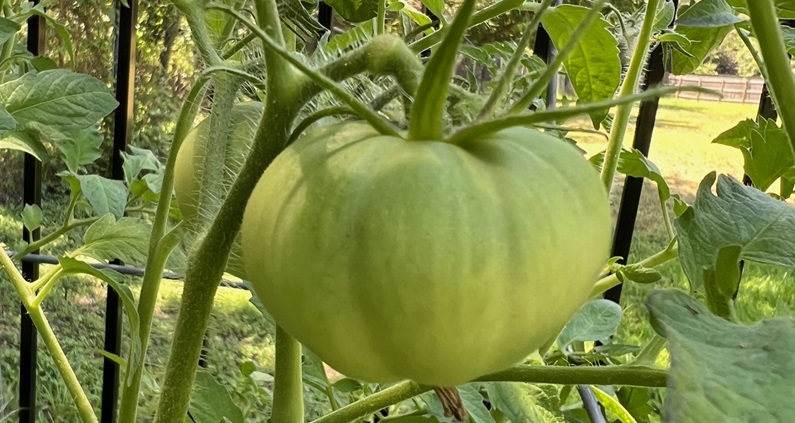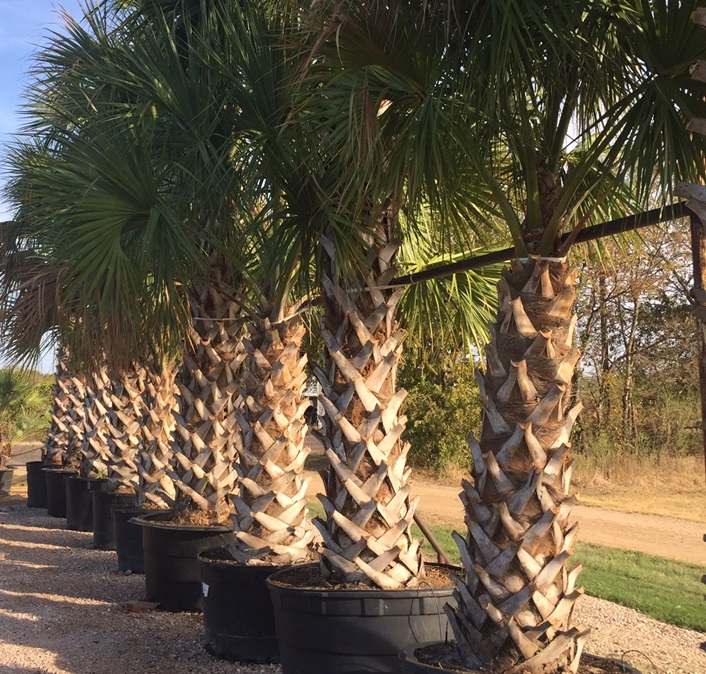Christmas cactus and Thanksgiving Cactus are tropical plants native to the rainforests of Brazil. They grow in similar environments as epiphytic orchids, in the forks of tree limbs, where they grow in decayed leaves and other natural debris that accumulates there. The flattened stem segments have no true leaves. The shapes of the segments differ in each species, which aids in identification.
Easter Cactus also grows in forests in Brazil, but in drier forests than the Christmas and Thanksgiving Cactus. They are not considered tropical plants and their care will differ from the Christmas and Thanksgiving Cactus. They also bloom at a different time of year.
Most commercially available varieties are likely Schlumbergera x buckleyi, which is a cross between Schlumbergera truncata and Schlumbergera russeliana (formerly S. bridgesii).
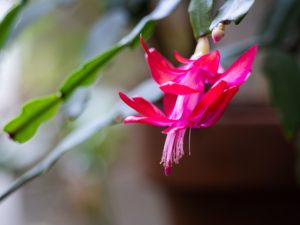
Christmas Cactus Schlumbergera russeliana “True” Christmas Cactus are seldom found for sale around the holidays. Their leaf segments are smooth and scalloped, shorter and wider than the others, and the branches and flowers hang down like a pendant. The plant is more brittle than the Thanksgiving Cactus, which makes it more difficult to ship. The anthers of Christmas Cactus will be purple or brown.
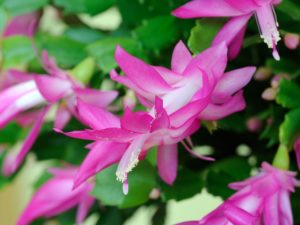
Thanksgiving Cactus Schlumbergera truncata This is the plant that you will most likely find for sale around the holidays being sold as a “Christmas Cactus”. The leaves are not scalloped like the “true” Christmas Cactus, but have have pointed “hooks” which distinguish them from their close cousins. Their branches arch UP before hanging down, opposed to the Christmas Cactus, which has more pendulous branches. The flowers are held horizontally. The anthers will be yellow on this cactus. As stated above, the commercially available species is likely a hybrid known as S. x buckleyi.
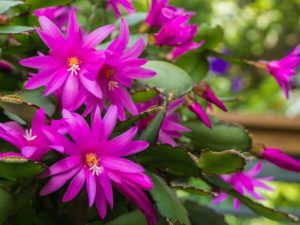
Easter Cactus Hatiora gaertneri Although also native to forests in Brazil, these grow in drier forests, while the Thanksgiving and Christmas Cacti grow in the tropical rainforests. Their leaves are scalloped on the edges and there will be small bristles at the tip of the stem. The flowers are starburst-shaped and will bloom in the spring between March and May, rather than in the fall like the Thanksgiving and Christmas Cacti. They are also more susceptible to over or under-watering. They form flower buds after 8-12 weeks of short days (12-14 hours of darkness) at 50°F.
When you bring your Christmas cactus home, it will most likely be in bud and bloom. To prevent bud drop, locate the plant in bright light in a humid environment, if possible. Setting them on a saucer or tray filled with pea gravel and water will increase humidity around the plant as the water evaporates. Avoid placing them close to a door, heating ducts, fireplace or drafty areas, as this will cause bud drop.
Your Christmas Cactus will do best in bright INDIRECT light. Direct sun is not recommended.
Do not repot or fertilize during the blooming period.
During the bloom period and for about a month after blooming, water less frequently than you would in the spring and summer, allowing the soil to dry between soakings. Remember to water WELL when you do water.
Click HERE to watch our video on Watering Houseplants correctly.
Pruning or transplanting should take place in February, March or April. (Rule of thumb: transplant or prune plants in the season opposite their blooming period.) Cuttings may also be taken at this time. Place one or two four inch cuttings in a small pot filled with a well drained potting soil. I prepare the pots and water the soil in them well about 2-3 days ahead. Use a pencil to make a hole to place the cuttings in. The cuttings will root with or without a rooting hormone, but may be quicker to root with the hormone. Do not water the soil again until it has been bone dry for at least two weeks. Always water the soil well when you do water, then let it dry completely. Keep the cuttings in medium light while rooting.
Christmas cactus have shallow root systems, and will bloom better when root-bound. You will have a fairly large plant in what seems to be a small pot for its size. When the plant becomes difficult to keep watered, check the root system by gently removing it from the pot. If it is very rootbound, consider moving it to the next size pot, using a well drained potting soil. I use Happy Frog Potting Soil for my Christmas Cactus.
When new growth begins in March or April, begin fertilizing monthly with a weak application of houseplant or African violet fertilizer until about September. Monthly fertilization from October to February should be limited to a nitrogen ratio below 10 percent, and may be mixed half strength if necessary.
During the growing season, water the soil thoroughly, then allow the top 1”-2″ of soil to dry before watering again (depending on the size of the pot).
If your Christmas/Thanksgiving Cactus turns purple, it is likely either from receiving too much direct sun, or from being too dry.
How to get your Christmas Cactus to Bloom:
The key to getting Christmas cactus to flower during the holiday season is proper light exposure, correct temperatures and limited watering. Christmas cactus react to both temperature and day length (actually the length of the dark period would be more accurate) to begin the bloom cycle
Using Temperature to Set Buds
In September and October, locate plants where they will receive temperatures of around 50-55 degrees. It is ok if they just receive the cooler temperatures at night. I grow my Christmas Cactus outside in dappled shade during the summer, and when the nights begin to cool, and the days become shorter, the buds will begin to form. Avoid night lighting where the plants are located, as this could delay bud formation. Don’t forget to bring the plant indoors for a freeze, as they will not withstand freezing temperatures, and prefer temperatures above 40°F.
Using Daylength (actually Darkness) to Set Buds
Your Christmas Cactus should receive bright, indirect light during the day and 16 hours of total darkness at night for about 6 weeks in order to set buds. I use this method if my plants are going to be kept indoors year-round. You can move it into a dark closet at night and bring it out in the morning. A box placed over the plant for 16 hours per night will have the same effect. Place it in the coolest room possible and continue providing complete darkness at night until you see the buds initiate. If the plant receives even one flash of light during this period, you will have to start the process over again.
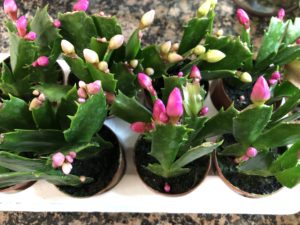
If your plants have been exposed to the correct temperatures and/or daylength, your Christmas cactus should begin to produce buds before Thanksgiving in Central Texas. Blooms should continue to open for about 3-4 weeks in a cool room. If you are a bit late in exposing them to these conditions, no worries. You can still use these methods to initiate buds. The plants will simply set buds a little later. Just remember to protect them from freezes when they are outside
Christmas and Thanksgiving Cactus have been known to have been handed down in families for over 100 years. They are a wonderful addition to our holiday decor. As a bonus they are non-toxic to our dogs and cats


